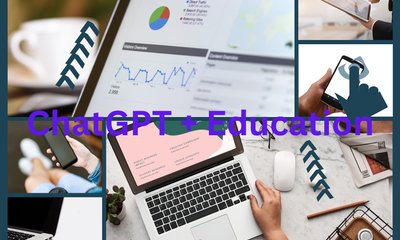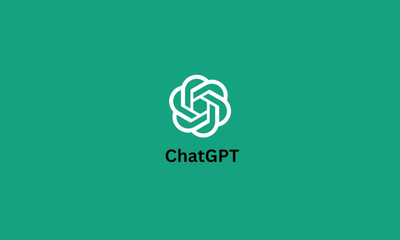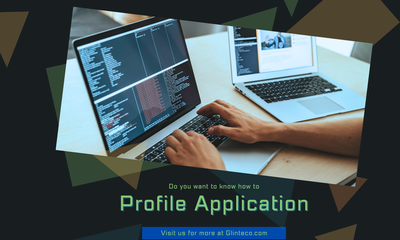ChatGPT:教育の未来
By hientd, at: 2022年11月17日11:45
Estimated Reading Time: __READING_TIME__ minutes


1. はじめに
人工知能(AI)はここ数年で世界を変え、教育も例外ではありません。最近注目を集めている画期的なAIモデルの1つに、ChatGPTがあります。これはOpenAIによって開発されており、ChatGPTは、深層学習技術を用いてテキストプロンプトに基づいて人間のような応答を生成する強力な言語モデルです。その可能性は、教師と生徒の両方の学習体験を向上させるための新たな機会を提供します。
今日のデジタル時代において、教育におけるAI技術の力を活用することは非常に重要です。ChatGPTは、デジタルリソースの利用可能性の向上とパーソナライズされた学習体験の必要性を実現するための有望なソリューションを提供します。AIを活用することで、教育企業やサービスは、生徒の関心を高め、批判的思考を育み、個別対応のサポートを提供するための革新的な方法を探求できます。この技術は、従来の教育方法を変革し、よりインタラクティブでダイナミックな学習環境を作り出す可能性を秘めています。
教育者や教育機関が生徒の進化するニーズに適応しようと努力する中で、ChatGPTのようなAI技術の統合は多くの利点を提供することができます。しかし、その利点と潜在的な限界の両方を考慮して、慎重に実装に取り組むことが不可欠です。適切なバランスをとることで、ChatGPTの潜在能力を最大限に発揮し、より知的で効果的な教育システムへの道を切り開くことができます。
2. 教育におけるChatGPT:教師と生徒のエンパワーメント
2.1 教師のためのChatGPTの利点
パーソナライズされたアシスタンスとサポート:バーチャルアシスタント(ChatGPT)は、教師と生徒の両方に質問への回答、説明の提供、ガイダンスの提供を行うことができます。
例:教師は、異なる学習スタイルを持つ生徒をサポートするためのカスタマイズされた教育戦略についてChatGPTに尋ねることができ、個別に対応した指導とサポートを提供できます。
管理業務の効率化:クイズの生成、課題の採点、スケジュールの管理などの管理業務は、ChatGPTによって簡単に自動化できます。これらのルーチンタスクをChatGPTに委任することで、教師は指導計画の立案と生徒への貴重なフィードバックの提供により多くの時間を費やすことができます。
例:教師は、特定のトピックに基づいて複数選択式のクイズを生成するようChatGPTに要求し、一貫した品質を確保しながら、評価の作成にかかる時間と労力を節約できます。
2.2 生徒のためのChatGPTの利点
個別化された学習体験:ChatGPTは、個々の問い合わせに基づいてパーソナライズされた説明、例、追加のリソースを提供することで、生徒の固有のニーズ、学習ペース、好みに適応し、生徒が複雑な概念を理解し、自分のペースで進歩できるようにします。
例:生徒はChatGPTとやり取りして、特定の学習目標に合わせて調整されたパーソナライズされた学習ガイドを受け取ることができ、追加のサポートが必要な領域に集中できます。
即時の情報とリソースへのアクセス:ChatGPTの膨大な知識ベースのおかげで、生徒はさまざまな科目の情報を迅速にアクセスし、さまざまな視点を探求し、複雑なトピックについて明確化を求めることができます。情報量の豊富な情報への即時アクセスは、従来の教室の資源を超えた学習機会を拡大します。
例:生徒はChatGPTを使用して、歴史的出来事、科学現象、文学分析に関する質問をすることができ、即座に回答を受け取り、関心のある分野に関するより深い洞察を得ることができます。
創造性と批判的思考力の育成:ChatGPTは、オープンエンドの議論を促し、代替案の視点を提供することで、生徒の創造性と批判的思考力を刺激します。生徒を考えさせるような会話に参加させ、問題を分析し、論理的推論を展開し、さまざまな主題について批判的に考える手助けができます。
例:生徒はChatGPTとチャットベースの議論に参加し、社会問題、倫理的問題、科学的な論争に関するさまざまな観点を検討することで、分析力と議論力を磨くことができます。
教師と生徒の両方のためにChatGPTの利点を活用することで、教育機関は、個人の成長を育み、学業の優秀性を促進する包括的でダイナミックな学習環境を作り出すことができます。
3. ChatGPTによる学習体験の向上
3.1 ChatGPTはどのように生徒の学習体験を向上させるか?
ChatGPTは、生徒に知識を拡大し、理解を深めるための多用途でインタラクティブなツールを提供することで、学習体験を大幅に向上させます。ChatGPTが学習体験を向上させる主な方法を以下に示します。
オンデマンドの個別指導とガイダンス:生徒は、困難に遭遇したり、質問があったりするたびに、ChatGPTからすぐに支援を求めることができます。それはバーチャルチューターとして機能し、説明、明確化、段階的なガイダンスを提供することで、生徒が課題を克服し、より効果的に概念を理解できるようにします。
例:複雑な数学の問題に苦労している生徒はChatGPTとやり取りすることができ、ChatGPTは問題をより単純なステップに分解し、関連する例を提供し、生徒を解決策へと導くことができます。
魅力的でインタラクティブな学習:ChatGPTは生徒をダイナミックでインタラクティブな会話に参加させ、能動的な学習を促進します。生徒はオープンエンドの質問をし、さまざまな視点を探求し、有意義な議論に参加することで、好奇心と知的な成長を育みます。
例:文学の授業中、生徒はChatGPTとチャットベースの対話に参加し、登場人物の動機を議論し、文学的手法を分析し、主題解釈を探求することで、テキストの理解を深めることができます。
3.2 ChatGPTの利点は何ですか?
教育におけるChatGPTの導入による利点は、個々の学習体験を超えています。注目すべき利点としては以下があります。
アクセシビリティと包括性:ChatGPTは情報とリソースへの公平なアクセスを提供し、多様な背景と学習能力を持つ生徒が完全に参加できるようにします。教育格差を解消し、質の高い教育をよりアクセスしやすくし、教室内で包括性を促進します。
例:視覚障害のある生徒は、ChatGPTを使用して、視覚コンテンツの音声ベースの説明と記述を受け取ることができ、教育資料を効果的に活用できます。
パーソナライズされた学習パス:ChatGPTは、各生徒の固有の学習ニーズと好みに適応し、学習体験をそれぞれの強みと改善すべき点に合わせて調整します。このパーソナライズされたアプローチは、個々の才能を育み、自信を高め、全体的な学習成果を向上させます。
例:ChatGPTは生徒のパフォーマンスを分析し、特定の学習目標に合わせたさらなる学習教材、練習問題、補足資料に関するカスタマイズされた推奨事項を提供できます。
3.3 ChatGPTは生徒の学業成績にどのように影響するか?
学習プロセスへのChatGPTの導入は、いくつかの方法で生徒の学業成績にプラスの影響を与える可能性があります。
保持力と理解力の向上:ChatGPTのインタラクティブな性質とリアルタイムのフィードバックは能動的な学習を促進し、生徒の概念の保持力と理解力を高めます。生徒がより深く考え、熟考することを促し、主題に関するより深い理解につながります。
例:生徒はChatGPTを使用して、質問をし、明確化を求め、実践的な応用について議論することで、複雑な科学理論の理解を見直し、強化することができます。
問題解決能力の向上:ChatGPTは、生徒が批判的に考え、複数の視点から問題を分析し、革新的な解決策を開発することを促します。ChatGPTと関わることで、生徒は問題解決能力を磨き、自信を持って課題に取り組むことができます。
例:生徒はChatGPTを使用して、アイデアをブレインストーミングし、複雑な数学の問題を解決したり、科学実験を設計したりするためのアプローチに関するフィードバックを受けることができます。
3.4 生徒はChatGPTを使用できるべきですか?
生徒がChatGPTを使用できるかどうかという問題は、教育の文脈、年齢層、学習目標など、さまざまな要因によって異なります。ChatGPTは大きな利点を提供しますが、その機能を活用することと、独立した思考力と基礎的なスキルを促進することのバランスをとることが重要です。
例:特定の状況では、生徒がガイダンスとサポートのためにChatGPTを使用することを許可することが有益な場合がありますが、批判的思考能力を開発し、独立した問題解決を行い、多様な情報源を通じて知識を検証することを奨励することが不可欠です。
ChatGPTが学習体験をどのように向上させるか、その利点を認識し、適切な使用方法を考慮することで、教育者や教育機関はこのAI技術の潜在能力を最大限に活用し、生徒にとってより魅力的で、包括的で、効果的な学習環境を作り出すことができます。

4. 潜在的な欠点と考慮事項
ChatGPTは教育セクターで大きな利点を提供しますが、特定の制限と考慮事項を認識することが重要です。これらの潜在的な欠点を理解することで、教育者や教育機関はそれらに効果的に対処し、教育におけるChatGPTの使用に関する情報に基づいた意思決定を行うことができます。
4.1 ChatGPTの理解の限界
応答における文脈認識の欠如:ChatGPTの応答は、トレーニングデータのパターンと例に基づいて生成されるため、質問の文脈を常に完全に理解したり、ニュアンスのある応答を提供したりするとは限りません。この制限により、情報が不完全または不正確になる場合があります。
例:生徒が複雑な歴史的な質問をした場合、ChatGPTは特定の歴史的出来事や文化的ニュアンスを考慮せずに、一般的な概要を提供する場合があります。
不正確または偏った情報の生成の可能性:ChatGPTは、インターネットの情報源など、膨大な量のデータから学習するため、不正確さや偏見が含まれている可能性があります。ChatGPTから得られた情報を検証し、すべての応答を決定的なものまたは偏りのないものとして受け入れるのを避けるために、批判的思考能力を促進することが重要です。
例:ChatGPTは、適切な監督がない場合、デリケートなトピックについて議論するときに、意図せず偏った意見や物議を醸す意見を生成する可能性があります。
4.2 倫理的な懸念と悪用
剽窃と学問的誠実性の課題:ChatGPTを通じて情報を簡単にアクセスできるため、生徒が基礎的な概念を理解せずに課題全体を生成するためにChatGPTに頼るなど、潜在的な悪用に関する懸念が生じています。これは、学問的誠実性と、不可欠な調査とライティングスキルの開発に対する脅威となります。
例:適切な出典表示や独創的な考えなしに、ChatGPTから直接回答をコピーする生徒。
批判的思考能力を開発することなくAIへの過剰依存:ChatGPTは貴重なガイダンスを提供できますが、生徒が批判的思考、問題解決、分析能力も養うことを確実にするためにバランスをとることが不可欠です。AIツールへの過度の依存は、これらの基本的な能力の発達を妨げる可能性があります。
例:独立した思考や探求を行わずに、ChatGPTのみに頼って問題を解決する生徒。
4.3 感情知能と人間関係
共感的な反応と感情的なサポートを提供できないこと:ChatGPTには、感情知能と、生徒の感情や個人的な苦労を理解し、共感的に対応する能力が欠けています。教師や仲間からの人間関係と感情的なサポートは、包括的な学習体験にとって不可欠なものです。
例:ChatGPTは、困難な時期や感情的なサポートを求めているときに、生徒が必要とする理解や思いやりを提供できない可能性があります。
人間関係の維持の重要性:ChatGPTは教育の特定の側面を強化できますが、人間関係に取って代わるべきではありません。教師や仲間との関係を築き、議論に参加し、プロジェクトで協力することは、社会性と感情の発達を促進する学習プロセスの不可欠な要素です。
例:チームワークと協調を促進する対面での交流、教室での議論、グループ活動は、ChatGPTによって完全に再現することはできません。
これらの潜在的な欠点を認め、それらを軽減するための適切な戦略を検討することで、教育者は教育環境へのChatGPTの統合に関する責任ある意思決定を行うことができます。
5. 倫理的な使用と監視の確保
教育におけるChatGPTの採用が増加するにつれて、その倫理的な使用を確保し、実装を監視するためのメカニズムを確立することが重要です。教育者と教育機関は、生徒を責任ある使用に導き、人間とAIの相互作用の健康的なバランスを維持することに重要な役割を果たします。
5.1 教師は生徒がChatGPTを使用しているかどうかを判断できますか?
生徒がChatGPTを使用しているかどうかを検出することは、ChatGPTによって生成された応答は人間の応答に非常に似ている可能性があるため、困難であり、過剰な作業になる可能性があります。しかし、作文の質の突然の向上や、生徒の知識ベースにおける矛盾など、教師が注目できる特定の指標があります。
5.2 悪用の検出と対処
学問的誠実性と独創性の促進:教育者は、学問的誠実性の重要性を強調し、生徒が自分の仕事で理解と創造性を示すよう奨励する必要があります。剽窃とAIツールの使用に関する明確なガイドラインとポリシーは、悪用を阻止するのに役立ちます。
例:教師は、生徒の理解と独創性を測るために、課題と一緒に説明や個人的な感想を要求できます。
人間とAIの相互作用の健康的なバランスの維持:ChatGPTの利点を活用することと、教育における人間関係の価値を維持することのバランスをとることが不可欠です。議論、グループ活動、批判的思考演習を奨励することで、生徒がAIによって生成された応答のみに依存するのではなく、主題と関わることができるようにします。
例:協調的な問題解決を必要とする教室での議論やプロジェクトベースの学習活動を取り入れることで、バランスの取れた学習体験を促進できます。
学問的誠実性を積極的に促進し、明確なガイドラインを提供し、生徒の仕事に目を向けることで、教育者はChatGPTの潜在的な悪用を検出し、適切に対処できます。ChatGPTを補足的なツールとして使用しながら、生徒がスキルと知識を開発することを促す、支援的で包括的な学習環境を維持することが不可欠です。
6. 学校におけるChatGPTの実装:ベストプラクティス
教育環境にChatGPTを効果的に統合するには、教育者がそれを受け入れるべき理由を理解し、実装に適した戦略を採用することが不可欠です。ベストプラクティスに従うことで、教師はChatGPTを活用して学習体験を向上させ、魅力的でインタラクティブな教室を作成できます。
6.1 なぜ学校でChatGPTを使用する必要があるのか?
学習機会の充実:ChatGPTは、生徒の手の届くところに膨大な量の知識と情報を提供します。それはリソース、説明、例への即時アクセスを提供し、学習体験を豊かにし、さまざまな主題に関する生徒の理解を深めます。
パーソナライズされた学習体験:個々のニーズに適応する能力により、ChatGPTはパーソナライズされた学習体験を可能にします。生徒の固有の学習スタイル、ペース、興味に基づいて、応答、提案、学習資料を調整できます。
6.2 教育者向け統合戦略
授業計画と指導へのChatGPTの組み込み:教育者は、指導目標をサポートするための補足的なツールとして、授業計画にChatGPTを統合できます。追加の説明を提供し、質問に答え、さまざまな視点を提供することで、教室での議論の深さと広がりを高めることができます。
例:歴史の授業では、教師はChatGPTを使用してリアルタイムの情報を提供し、重要な歴史的出来事に関するインタラクティブな議論に生徒を参加させることができます。
魅力的でインタラクティブな学習体験の創造:ChatGPTを使用して、生徒を学習プロセスに積極的に関与させるインタラクティブな活動やシミュレーションを設計できます。それはバーチャルチューターとして機能し、生徒を問題解決演習を通して案内し、フィードバックを提供し、批判的思考力を育成します。
例:科学の授業でChatGPTを使用することで、生徒は仮想実験に参加し、科学的概念について質問し、即座に回答とフィードバックを受けることができます。
授業計画と指導にChatGPTを取り入れることで、教育者は学習体験を豊かにし、パーソナライズされたサポートを提供し、生徒の関心を高めることができます。ただし、ChatGPTは人間の指導と相互作用に取って代わるのではなく、補完するものであることを忘れないことが重要です。
7. 学術研究のためのChatGPT
ChatGPTは、教室での学習体験を向上させる可能性だけでなく、学術研究のための貴重な機会も提供します。研究者は、ChatGPTを強力なツールとして活用して、データを探索および分析し、調査を進め、さまざまな分野の知識の進歩に貢献することができます。
7.1 学術研究にChatGPTをどのように使用するか?
研究者は、学術研究の取り組みにおいて、幅広い用途でChatGPTを活用できます。彼らは以下を行うことができます。
- 複雑なトピックに関する洞察と視点を獲得するために、ChatGPTとインタラクティブな議論を行う。
- パターン、傾向、相関関係を特定するのに役立つ、データを分析および解釈するためにChatGPTを使用する。
- 情報を収集し、文献レビューを行い、予備仮説を生成するのに役立つ、バーチャル研究アシスタントとしてChatGPTを使用する。
7.2 データ分析と探索のためのChatGPTの活用
ChatGPTの自然言語処理機能は、データ分析と探索にとって貴重な資産となります。研究者はChatGPTを使用して大量のデータを処理し、関連情報を抽出し、研究対象をより深く理解することができます。
7.3 AI技術を使用した教育研究の進歩
教育研究にChatGPTを取り入れることで、研究者は、教育方法を改善し、生徒の関与を高め、パーソナライズされた学習アプローチを開発するための革新的な方法を探求できます。ChatGPTから得られた洞察は、教師と生徒の両方に利益をもたらすエビデンスに基づいた実践の開発に貢献できます。
8. まとめ
結論として、ChatGPTは、教師のエンパワーメント、生徒の関与、学術研究の進歩を通じて、教育を変革する途方もない可能性を秘めています。パーソナライズされた学習体験、情報への即時アクセス、イノベーションの機会を提供します。しかし、その使用に関連する潜在的な欠点と倫理的な考慮事項を認識することが重要です。
教育者と研究者として、その限界を認識しながら、ChatGPTを貴重なツールとして受け入れることが不可欠です。責任ある使用、人間関係、批判的思考、バランスの維持を組み合わせることで、教育環境へのChatGPTの効果的かつ倫理的な統合を確保できます。
ChatGPTの力を活用することで、生徒の可能性を最大限に引き出し、創造性を育み、教育の明るい未来を切り開く学習環境を創造できます。
ChatGPTのようなAI技術の長所と教育者や研究者の専門知識を組み合わせることで、可能性は無限大です。共に教育変革の旅に乗り出しましょう。





